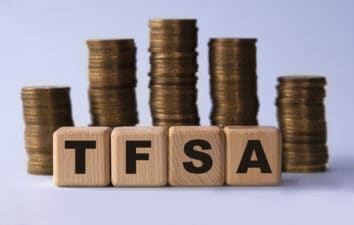Canadian investors searching for reliable high-yield monthly income streams to add to their portfolios in 2025 could be spoilt for choice. While many investors focus on individual TSX dividend stocks, exchange-traded funds (ETFs) can also be a smart choice for steady passive income.
High-yield dividend ETFs offer ready-made portfolios that are professionally managed and provide instant diversification at low costs. Better yet, you can hold them in tax-advantaged accounts like your tax-free savings account (TFSA). Two of my favourite high-yield ETFs could deserve special attention in 2025.
Mackenzie Floating Rate Income ETF: A 9.4% yield monster
If you’re interested in fixed income but want something different from regular bonds, the Mackenzie Floating Rate Income ETF (TSX:MFT) might be exactly what you’re looking for. This fund, actively managed by Power Financial, a subsidiary of Power Corporation of Canada (TSX:POW), offered an impressive 9.4% dividend yield during the past year, paid monthly, giving investors 12 payments per year instead of the typical quarterly dividends from stocks.
What makes this ETF special? It invests in floating-rate loans and high-yield debt from companies worldwide. The portfolio consists of 85.2% loans, 6.8% corporate bonds, and a few mortgage-backed securities. These floating-rate investments have a unique advantage in today’s market environment – returns typically adjust with market interest rates, offering better capital protection against rate changes compared to traditional fixed-rate bonds.
The fund’s managers take an active approach, carefully selecting investments based on detailed company analysis. They spread their 270 picks across different industries to reduce risk and protect against currency fluctuations by hedging foreign currencies back to Canadian dollars. This active management style means the ETF can react quickly to market changes and opportunities.
For this professional management, you’ll pay about $6.60 per year for every $1,000 invested, given a management expense ratio (MER) of 0.66%. While this fee is higher than some passive ETFs, the high yield and active management make it worthwhile for income-focused investors.
BMO High Yield US Corporate Bond ETF: Stable income from U.S. bonds
With $1.1 billion under management, this BMO High Yield U.S. Corporate Bond ETF (TSX:ZJK) is a heavyweight in Canadian investment funds. It follows the Bloomberg Barclays U.S. High Yield Very Liquid Index and delivers monthly distributions with a solid 5.5% yield.
The fund holds over 1,100 U.S. corporate bonds rated below investment grade (commonly called high-yield or “junk” bonds). Don’t let the “junk” label scare you – while these bonds carry more risk than government bonds, they typically offer higher interest rates to compensate. Historically, the higher yields more than compensate for the risk, and the returns per unit of risk have been lucrative, resulting in above-average Sharpe ratios for the sub-asset class.
The ETF invests in a well-diversified portfolio across major sectors: 21.8% in financial companies, 14.1% in communication services, 13.5% each in consumer discretionary and industrial companies, and 12.4% in energy firms.
Most of the bonds (86.3%) come from U.S. companies, with smaller allocations to Canadian (4.6%) and UK (2%) firms. This gives you good exposure to the world’s largest corporate bond market. The ETF takes a passive approach, simply tracking its index rather than trying to beat it, which helps keep costs relatively manageable at $6.10 for every $1,000 invested (0.61% MER).
Why the high-yield ETFs stand out in 2025
Several features make these ETFs attractive for income investors. Their regular monthly income payments help with budgeting and cash flow, while their professional management and research teams watch over your investment. They offer broad diversification across hundreds of companies, across sectors, and across asset classes, and different investment approaches (active vs. passive) help to suit different investor preferences. Further, their eligibility for tax-advantaged accounts like TFSAs and RRSPs enhances passive income tax efficiency.
Most noteworthy, although higher yields typically signal higher risk, the two ETFs are low-to-medium risk- rated. Their lower-rated bond portfolios may see bigger price swings than government bonds or blue-chip dividend stocks during severe market stress. However, I am not modelling a rare catastrophic market shock in North America for 2025.
Used wisely, the two high-yield dividend ETFs can be valuable tools for generating steady passive income in 2025 and beyond.









